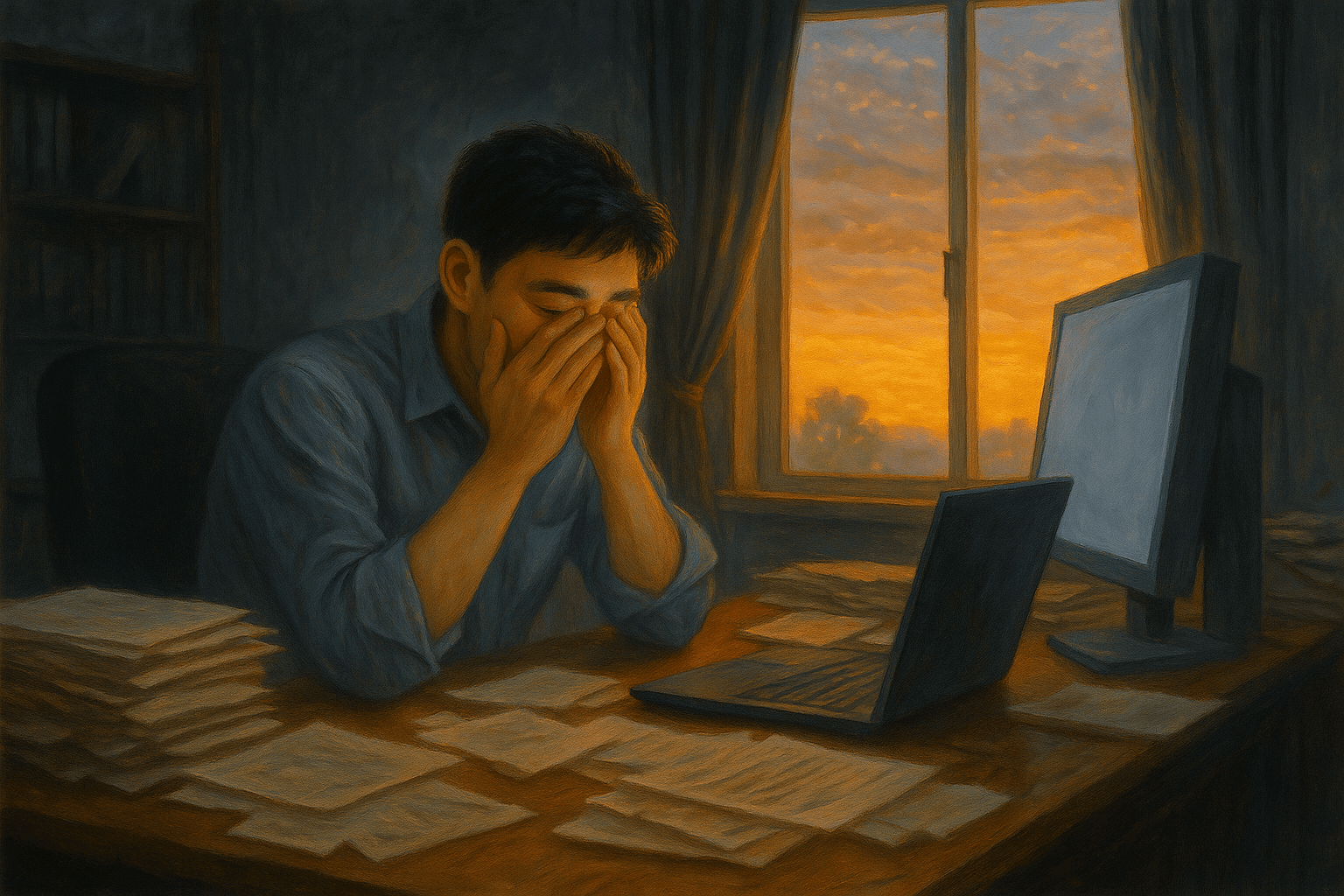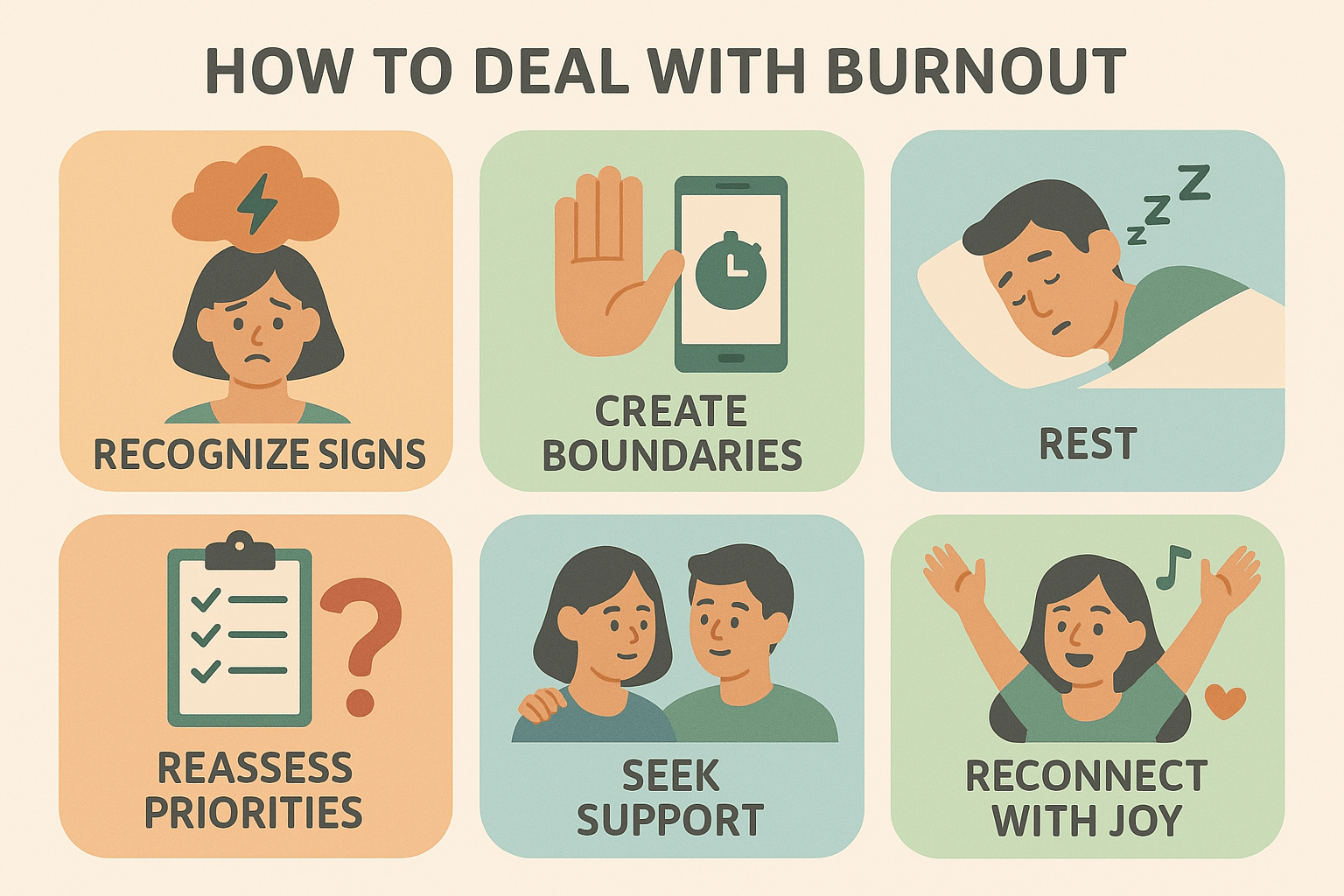How to Deal with Burnout: A Therapist’s Guide to Recovery

In today’s always-on world, burnout is becoming more common—and more harmful. If you’re feeling drained, detached, or constantly overwhelmed, you’re not alone. Many people silently endure chronic stress until it spirals into mental and physical exhaustion. That’s why it’s crucial to understand how to deal with burnout before it impacts your long-term well-being.
This guide explores the root causes of burnout and offers practical, therapist-backed steps to help you reset, recover, and reconnect with what matters.
1. Spot the Early Warning Signs
Burnout doesn’t appear overnight—it creeps in. Common early signs include:
- Persistent fatigue that doesn’t go away with sleep
- Emotional numbness or detachment from work and relationships
- Cynicism, irritability, or hopelessness
- Reduced performance or motivation
- Physical issues like headaches, insomnia, or digestive problems
Recognizing these signs early is critical. According to the World Health Organization, burnout is classified as an “occupational phenomenon” resulting from chronic workplace stress that has not been successfully managed [1].
2. Rebuild Boundaries—Especially Around Work
Many people dealing with burnout have lost control over their time and attention. You may find yourself checking work emails at night, skipping lunch breaks, or taking on more than you can handle. Restoring boundaries can be one of the most effective strategies.
Try setting these limits:
- No work emails or calls after a set hour
- Scheduled screen-free breaks during the day
- Regular physicalmovement to break up sedentary time
- A dedicated “shutdown” routine at the end of your workday
These boundaries help you create space for recovery—and send a message to yourself that your time is valuable.

3. Prioritize Real Rest and Restoration
When people talk about how to deal with burnout, rest is always part of the conversation—but not all rest is created equal. Real rest goes beyond sleep. It includes mental rest, emotional decompression, and nervous system regulation.
Effective practices include:
- Mindfulness or short breathing exercises during the day
- Quiet time in nature or low-stimulation environments
- Journaling to process emotional stress
- Gentle stretching, walking, or yoga to reconnect with your body
Research published by the American Psychological Association highlights that people who engage in meaningful recovery activities—like relaxation or time away from work-related tasks—show improved mental resilience and well-being [2].
4. Let Go of the “Shoulds”
A major source of burnout is living according to unrealistic expectations—internal or external. If your to-do list is driven by guilt, perfectionism, or people-pleasing, your energy will drain quickly.
Take a pause and ask:
- Is this task truly aligned with my goals?
- What can I delegate, delay, or decline?
- Where do I need to lower the bar—just for now?
Sometimes learning how to deal with burnout means unlearning what productivity “should” look like. Your value doesn’t depend on how much you get done.
5. Reach Out—Burnout Doesn’t Heal in Isolation
Burnout can make you want to withdraw, but connection is part of the cure. Talking with someone—especially a therapist—can help you unpack the emotional toll, process stress, and develop better coping tools.
Support can come in many forms:
- Counseling or therapy (online or in-person)
- Sharing openly with a friend or partner
- Joining a support group for burnout, stress, or anxiety
You don’t need to haveit all figured out. You just need to feel heard and supported.

6. Reconnect With Meaning and Joy
Burnout tends to flatten everything. Joy, creativity, spontaneity—they all fade. But recovery includes slowly reintroducing moments that spark life back into your day.
Start small:
- Revisit a hobby you used to love
- Take a walk with no destination
- Cook a meal for yourself with care
- Notice something beautiful today—and pause to appreciate it
Part of knowing how to cope
with burnout is giving yourself permission to feel alive again, without rushing the process.
Burnout doesn’t mean you’re broken—it means your system needs repair. With support, rest, and healthy boundaries, you can rebuild not just your energy, but your relationship with yourself and your work.
You deserve to feel calm, capable, and connected again. Knowing how to deal with burnout isn’t just helpful—it’s essential for sustainable well-being.
Ready to feel like yourself again? We are here to guide you through burnout recovery with empathy and expertise. Schedule a confidential session today and take the first step toward lasting balance.